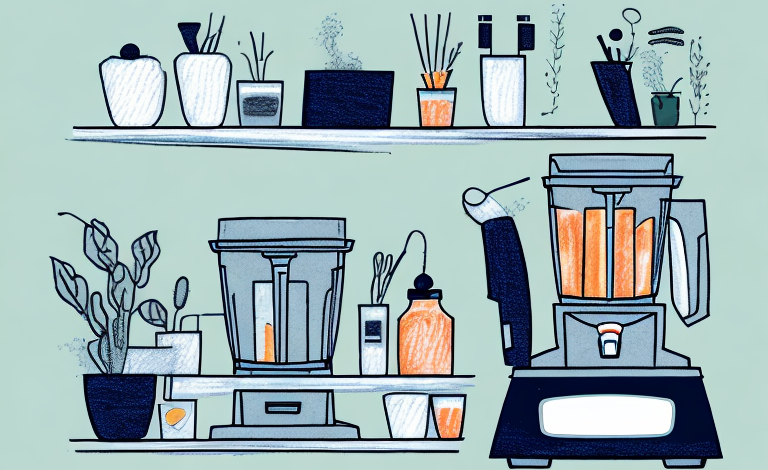When it comes to measuring the power of an engine, two terms commonly used are horsepower (HP) and peak horsepower. Both these terms define engine power, but they represent different aspects of it. In this article, we will explore the basics of horsepower and peak horsepower to understand the difference and why it matters.
Understanding the basics of horsepower
Horsepower is a unit to measure an engine’s power, which determines its ability to do work over a particular period. The term “horsepower” was coined by James Watt, an 18th-century Scottish inventor, who needed a unit to describe the power of his steam engines. One horsepower is equivalent to the power required to move 550 pounds one foot in one second or lift 33,000 pounds one foot in one minute. In simple terms, horsepower indicates how much work an engine can do in a particular time frame.
What is peak horsepower and how is it calculated?
Peak horsepower, also known as maximum horsepower or on-paper horsepower, refers to the highest amount of horsepower an engine can produce at a specific RPM (revolutions per minute). An engine’s peak horsepower is usually mentioned in its specification sheet or on the engine’s dyno chart.Peak horsepower is calculated by measuring the maximum output of an engine’s power over a short time interval when the engine is running at its highest RPM. It indicates the maximum output of horsepower that an engine can produce under ideal conditions, which is useful when comparing engines on paper.
The importance of understanding the difference between HP and peak HP
While peak horsepower is an essential number to determine the overall potential of an engine, it is not necessarily the most critical factor when it comes to everyday driving or performance. Understanding the difference between horsepower and peak horsepower is crucial to assess how an engine will perform in different situations.Horsepower is the actual power output of an engine, which can vary based on the engine’s RPM. For example, engines that produce less horsepower at low RPMs but more horsepower at high RPMs are considered powerful, but they may not be ideal for everyday street driving. Peak horsepower is only achievable when an engine is running at a specific RPM, which is usually higher than the RPM that an engine typically uses in regular driving. Therefore, peak horsepower is typically observed only during racing or other high-performance applications, and it may not be practically achievable in a standard driving scenario.
The impact of RPM on horsepower
The RPM of an engine plays a critical role in determining an engine’s power output. This is because the energy generated by combustion in the engine cylinder increases with RPM, leading to higher power output. However, the relationship between RPM and horsepower is not linear. Engines typically have a sweet spot where they achieve peak horsepower, which can fall in a specific RPM range. An engine’s operating RPM range also affects its power output and overall efficiency. Engines that have a broader RPM range tend to produce more power but may sacrifice fuel efficiency.
Why peak horsepower may not always be the most important factor
While peak horsepower is an essential factor to consider, there are several other factors to evaluate when assessing an engine’s overall performance. These include torque, powerband, weight, and efficiency.Torque, unlike horsepower, measures an engine’s rotational force and is important for acceleration and towing. The powerband determines the RPM range where an engine delivers the most power, making it crucial for driving experience. Engine weight impacts the overall performance and fuel economy of a vehicle. Finally, efficiency is essential for reducing emissions and maximizing fuel economy. Therefore, it is essential to evaluate an engine’s capabilities holistically, considering all of these various factors, rather than just peak horsepower.
How to determine the horsepower needs for your specific application
Determining the ideal horsepower for your application depends on the driving conditions that you intend to encounter. For street-legal vehicles used primarily for commuting, a horsepower output between 100-300 HP may suffice. For sport performance vehicles, horsepower between 300-600 HP is typically desirable. For racing or track vehicles, horsepower upwards of 600 HP may be required.Other factors such as vehicle weight, transmission type, and the type of fuel used, such as gas or electric, can also impact the horsepower requirements for specific applications. Careful consideration of these factors can help determine the ideal horsepower output for a specific application.
Does more horsepower always mean better performance?
While more horsepower does generally mean better performance, it doesn’t always translate to better driving experience. As we noted earlier, other factors, such as torque, powerband, weight, and efficiency, impact engine performance as well. These factors work together to determine an engine’s overall capabilities.For example, an engine with high horsepower but low torque may struggle with acceleration and slow driving. An engine with a limited powerband may only deliver high horsepower in a narrow RPM range, making it challenging to maintain consistent power output under different driving situations. Therefore, it’s crucial to evaluate an engine’s overall performance, considering all of these various factors.
The relationship between torque and horsepower
Torque and horsepower are two critical measures of an engine’s performance, and they work together to determine the engine’s overall power output. Torque is the force that determines an engine’s rotational movement, while horsepower is a measure of an engine’s rate of work. In essence, horsepower and torque are related, with torque providing the starting point for horsepower to build up over an RPM range. Horsepower becomes crucial at higher RPMs, enabling an engine to produce more power for high-speed racing or performance driving. Therefore, a healthy balance between torque and horsepower is essential for optimal engine performance.
How to increase horsepower in your vehicle
Several methods can be employed to increase the horsepower output of an engine, such as engine tuning, forced induction, or adding performance parts.Engine tuning is the process of adjusting the engine’s air/fuel ratio, ignition timing, and other parameters to optimize its performance. Forced induction, such as turbocharging or supercharging, forces more air into the engine, enabling it to generate more power. Finally, installing performance parts such as high-performance exhaust systems, headers, or cold air intakes can help remove restrictions and improve airflow to the engine, enhancing its performance. It’s essential to note that increasing an engine’s horsepower output may often sacrifice other engine parameters, such as fuel efficiency, reliability, and engine lifespan. Therefore, it’s crucial to weigh the trade-offs and consult with professionals to ensure that the modifications align with your driving needs.
The role of engine tuning in achieving optimal horsepower
Engine tuning is a critical aspect of achieving optimal engine performance and horsepower output. Tuning an engine involves adjusting various parameters to optimize the engine’s performance and power output.The air/fuel ratio is crucial in determining an engine’s horsepower output. A richer fuel mixture can help an engine produce more horsepower, but it can also negatively impact its fuel efficiency and emissions. Conversely, a lean fuel mixture may improve fuel efficiency but sacrifice engine performance.Optimizing the ignition timing can also help maximize horsepower output. A delay in the ignition timing can reduce horsepower output, whereas an early ignition timing can help an engine produce more power at a lower RPM.Engine tuning is a delicate balance between power output, fuel efficiency, and emissions. Therefore, it’s essential to consult with a professional tuner to ensure that your engine receives the appropriate adjustments that align with your driving needs.
Common misconceptions about HP and peak HP explained
There are several misconceptions about horsepower and peak horsepower that can be confusing for consumers. For example, it’s common for people to believe that peak horsepower is the most important factor in determining engine performance, and more horsepower is always better.However, we have seen that other factors, such as torque, powerband, weight, and efficiency, play a crucial role in determining engine performance. Additionally, peak horsepower is only achievable under specific conditions, and it may not translate to everyday driving scenarios.Another common misconception is that small engines are more fuel-efficient than larger engines because they produce less power. However, it’s essential to note that engine efficiency is not always directly proportional to engine size or power output. In fact, larger engines can often be more efficient than smaller engines, depending on the application.Understanding these misconceptions can help car owners make informed decisions when evaluating engine performance and selecting appropriate modifications or upgrades.
The connection between fuel efficiency and horsepower
While fuel efficiency and horsepower may seem to be opposing forces, they are, in fact, intertwined. An engine’s fuel efficiency is directly related to how much work it can do per unit of fuel consumed, where work can be measured in terms of horsepower.In essence, more powerful engines tend to be less fuel-efficient because they require more fuel to produce high power output. However, this is not always the case, as several factors, such as engine design, driving style, and transmission type, can impact fuel efficiency.Therefore, it’s essential to strike a balance between horsepower and fuel efficiency, depending on your driving needs. For commuters or those looking for better fuel economy, a less powerful engine may be more appropriate. For performance enthusiasts or those looking for higher power output, a more powerful engine may be desirable, despite its lower fuel efficiency.
How to compare different engines based on their HP ratings
Comparing different engines based purely on their horsepower ratings can be misleading, as we have seen throughout this article. However, if done correctly, comparing engines based on their horsepower ratings can provide a starting point for evaluating their overall capabilities.When comparing engines, it’s crucial to consider other factors, such as torque, powerband, weight, and efficiency. Additionally, examining the engine’s specifications, such as the type of fuel used, the number of cylinders, and the valvetrain, can provide insights into the engine’s potential performance.Examining an engine’s dyno chart can also provide a comprehensive view of how the engine performs across different RPM ranges. This can provide insights into an engine’s horsepower and torque outputs, as well as its powerband and peak horsepower capabilities.Therefore, when comparing engines based on their horsepower ratings, it’s essential to consider several factors that impact engine performance, rather than just focusing on peak horsepower.
Conclusion
In conclusion, understanding the difference between horsepower and peak horsepower is crucial to evaluate an engine’s capabilities and performance accurately. While peak horsepower is an essential factor to consider, it’s not necessarily the most critical factor when it comes to everyday driving or performance. Other factors, such as torque, powerband, weight, and efficiency, play an important role in an engine’s overall performance and must be evaluated holistically.By carefully considering these various factors, and consulting with professionals where necessary, drivers can determine the ideal horsepower output for their applications, make informed modifications, and select engines that provide the best balance between power output, fuel efficiency, and overall performance.



